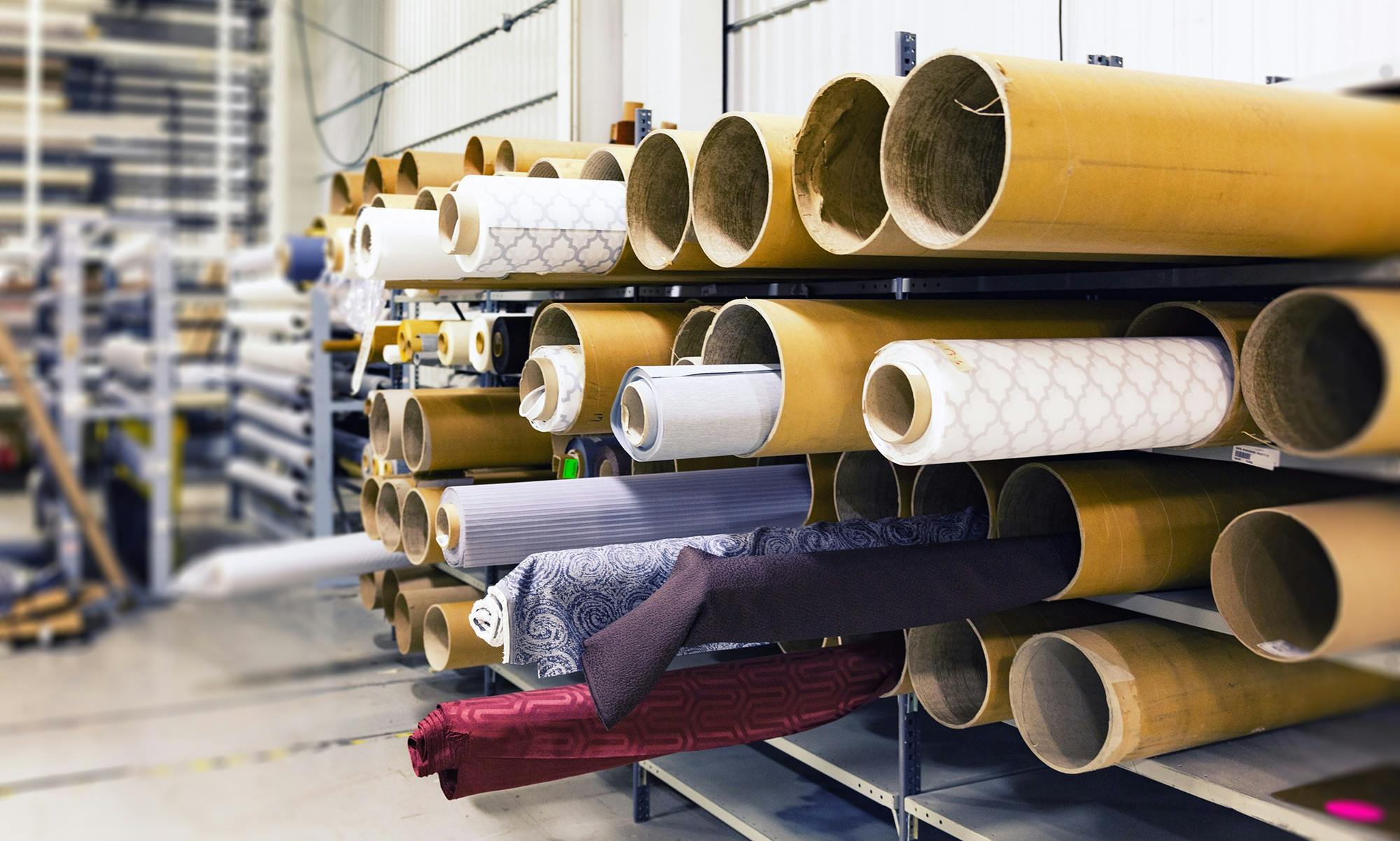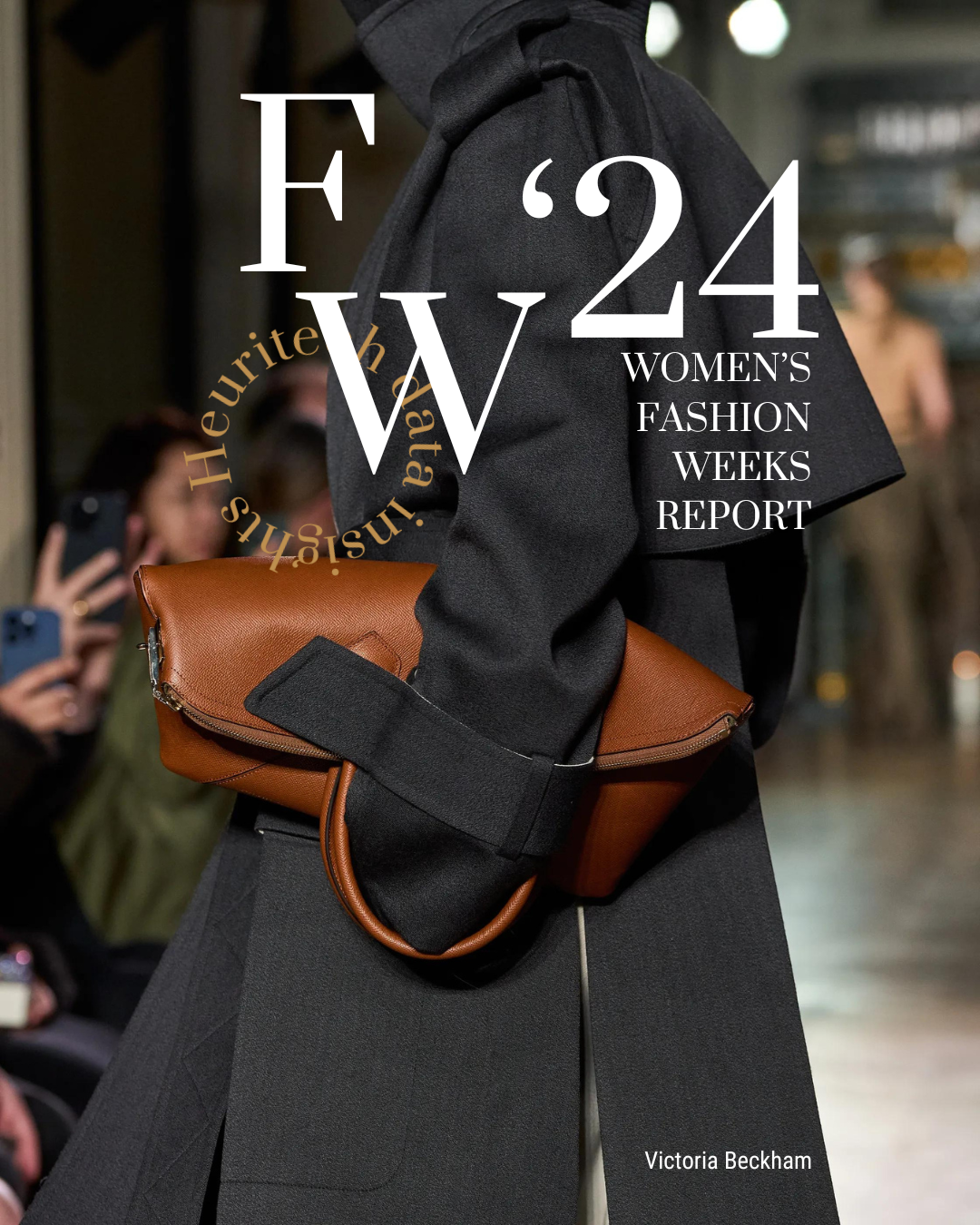As we approach the end of 2023, one thing is clear: AI’s capabilities are only getting stronger as more industries continue to embrace them.
The direct applications of AI in fashion are not only reshaping the way it operates but also addressing critical challenges that have long plagued the industry.
This article explores how AI advancements in 2023 have addressed long-standing issues faced in the fashion and apparel industry.
Supply chain optimisation
The global fashion supply chain has long been complex, often inefficient, notoriously wasteful, and significantly harmful to the environment.
In the past, retailers had to rely on guesswork and intuition to plan assortments and quantities for the future.
This process was not only time-consuming but also prone to errors, leading to overstocking or understocking of products.
The digital transformation of the fashion industry, which began years ago, has significantly optimized the supply chain.
AI has emerged as a powerful tool for supply chain optimisation.

These tools use predictive analytics and data mining techniques to provide insights into customer behaviour, market trends, and sales patterns.
By analysing this data, retailers can make informed decisions about which products to stock, in what quantities, and when to do so, thus improving the overall profitability of their business.
Personalisation in fashion retail
With consumers increasingly seeking personalised experiences, the one-size-fits-all approach in fashion retail has become outdated.
Through advanced data analytics, AI is revolutionising how brands engage with their customers.
From personalised recommendations based on individual preferences to virtual try-on experiences, AI is reshaping the retail landscape.
This level of personalisation enhances customer satisfaction and provides brands with valuable insights into evolving market dynamics.
During 2023, personalised shopping experiences have become the norm, thanks to AI-driven product recommendations.
Now, it is common practice for apparel retailers to leverage machine learning algorithms that analyse user behaviour, preferences, and purchase history to offer tailor-made suggestions.
ViSenze, for example, specialises in visual commerce and AI solutions, enabling visual search and image recognition for e-commerce platforms.
This technology lets users discover products through images, adding an interactive and convenient dimension to the online shopping experience.
Image: ViSenze website

The marriage of AI and personalised recommendations creates a more engaging and efficient shopping journey.
Sustainability challenges
Sustainability has become a cornerstone of the fashion industry, driven by increasing consumer awareness and well-needed regulatory pressures.
Perhaps its more valuable capability, AI, is instrumental in addressing sustainability challenges by optimising manufacturing processes, reducing waste, and aiding in the development of eco-friendly materials.
From analysing the environmental impact of production methods to creating circular fashion models, AI is propelling the industry towards a more sustainable future.
Moreover, in 2023, AI became a crucial player in creating a transparent and responsible fashion ecosystem.

One example of a company contributing to transparency in the fashion industry is EON.
EON is connecting the world’s products to Digital IDs to drive continuous relationships, royalties, and data for brands.
Image: EON ID
This addresses traceability, intelligent products, and digital passports for the life of the product and enhances consumer engagement.
AI algorithms, such as those employed by EON, track and analyse every supply chain step, from sourcing raw materials to manufacturing and distribution.
This level of transparency ensures ethical and sustainable practices.

Market Insights and forecasting
The well-known challenge of not only understanding your consumers but also anticipating what they will want in the future is one that most industry players fall victim to in such a rapidly evolving market.
In today’s market, consumers are more interested in defining what’s trendy than what brands try to force upon them.
They want to be catered to and expect trends to be delivered to them quickly. As a result, it has become increasingly challenging for brands to respond to these demands promptly.
AI, however, has proven its mettle in market analysis and forecasting.
Algorithms can predict emerging trends with unprecedented accuracy by processing vast amounts of data from social media, e-commerce platforms, and fashion events.
This not only assists designers in staying ahead of the curve but also enables retailers to align their inventory with consumer preferences.

Predictive insights addressing overstock
After analysing the challenges mentioned above, it’s evident that they all stem from or result in one common issue: overstocking.
A problem Heuritech has addressed head-on.
Recognising overstock as a consequence of misjudgments along the value chain, Heuritech employs predictive AI to anticipate market shifts and consumer preferences.
Heuritech’s approach quantifies global fashion trends by analysing consumer images, providing invaluable insights that empower brands to make informed decisions.
By doing so, Heuritech’s solution addresses the root cause of overstock – the gap in understanding consumer behaviour.
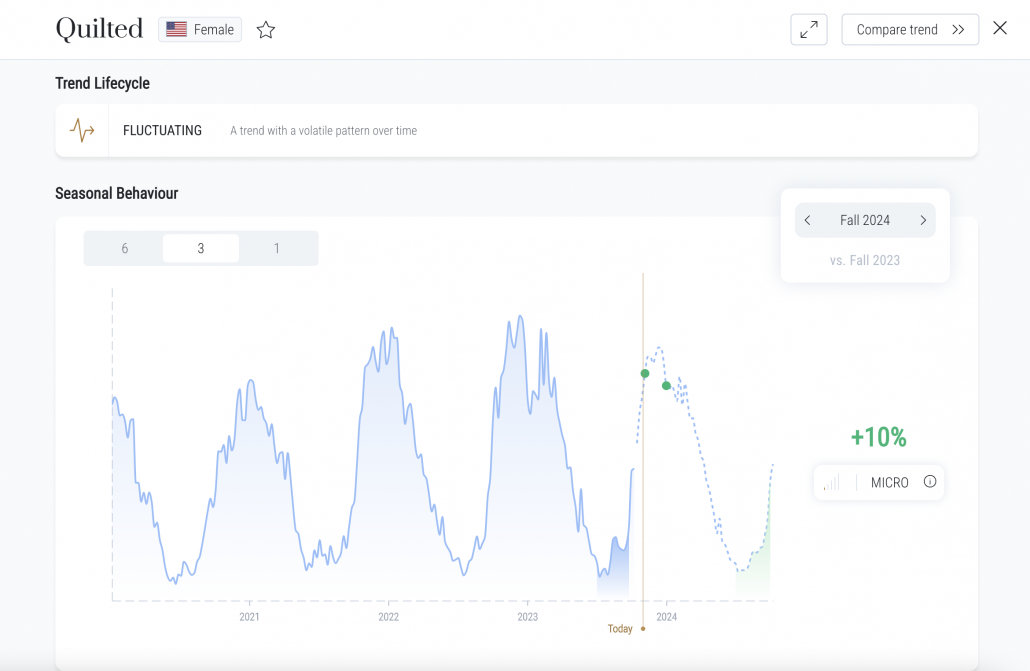
Through predictive AI, it enables fashion brands to align their production and inventory with actual market demand, mitigating the risk of overstock and the associated financial losses.
The predictive insights can be harnessed throughout the entire collection process, from the initial stages of product creation to the strategic product launch. It empowers various teams, from design and merchandising to marketing and visual merchandising, to collaborate seamlessly.
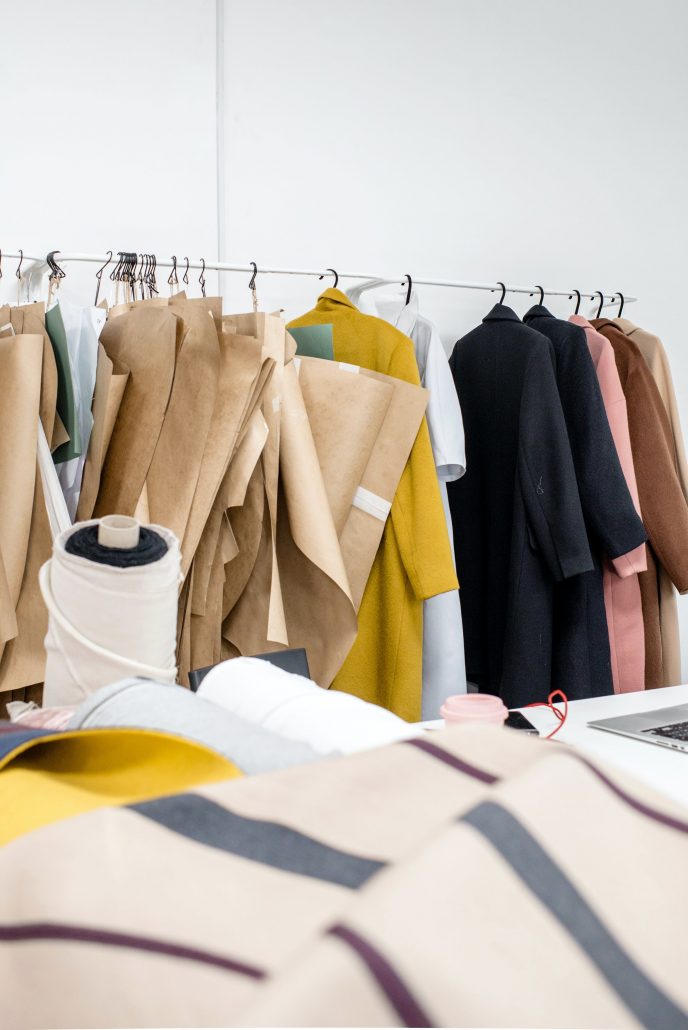
For designers, Heuritech is a valuable ally by providing data-driven insights that complement their creative intuition. This collaborative effort ensures that designs resonate with consumer preferences, reducing the likelihood of creating products that miss the mark.
Simultaneously, buyers and merchandisers benefit from Heuritech’s predictive AI, allowing them to curate assortments that align with future demand, thus optimising inventory and minimising overstock risks.
Armed with trends insights, marketing and visual merchandising teams can strategically position products at the right time and place, both in physical stores and online.
This targeted approach enhances the overall shopping experience for customers and maximises the potential for increased sales and brand visibility.
Heuritech, in essence, acts as a cross-collaborative tool that unifies diverse teams within a fashion company.
Rather than replacing human input, it facilitates effective communication by providing a common language based on data-driven insights.
Image: Data from Fashion Week SS’24 Heuritech Report
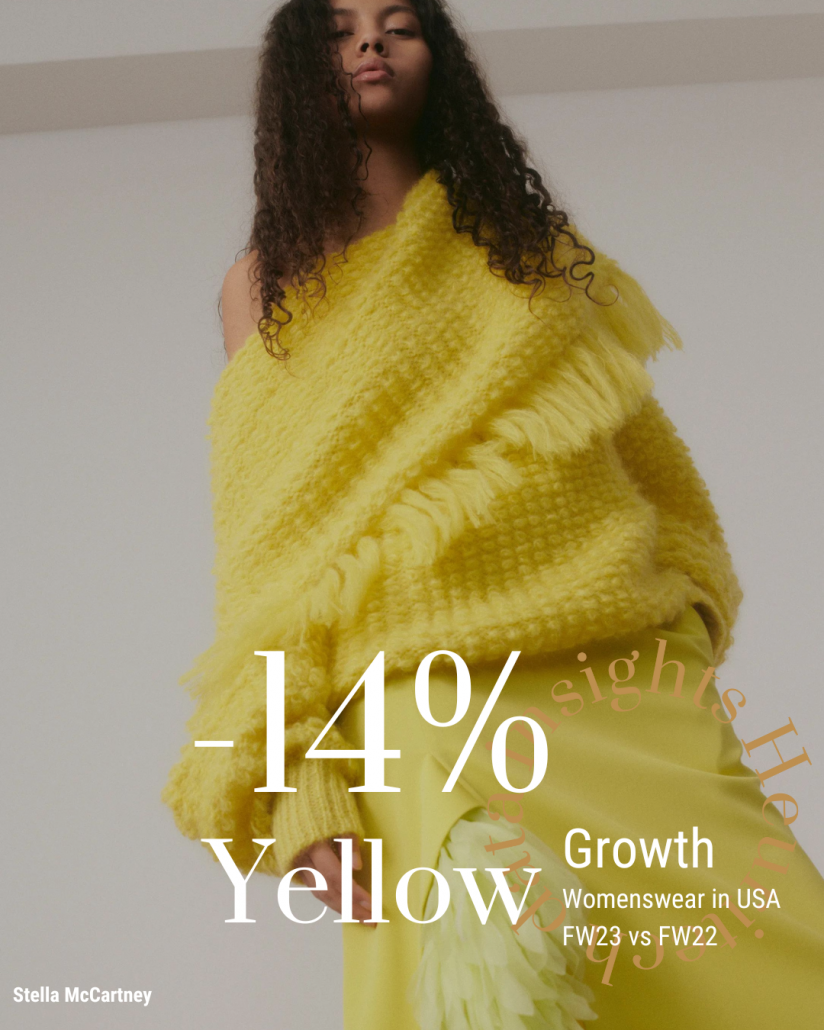
As we navigate the intricate landscape of the fashion industry in 2023 and enter a new year, the integration of AI has become a strategic imperative for the industry.
By addressing the overstock problem and enhancing decision-making across the value chain during 2023, AI propelled the fashion industry forward and contributed to a more sustainable and consumer-centric approach while ensuring unprecedented creativity and efficiency.
As the fashion industry and other creative industries embrace AI technology to make their jobs more efficient, these technologies will continue to evolve and adapt to address the continuous and often damaging challenges the industry is known for.

2023 was a year to accept that AI could change how brands function. And 2024 will be the year when brands will completely embrace it, and those who don’t will be left behind.
As Richard Baldwin, Economist, Professor of International Economics, rightfully said, “AI won’t take your job; it is somebody using AI that will take your job.”
Would you like to learn more about our solution? Don’t hesitate to contact our team.



